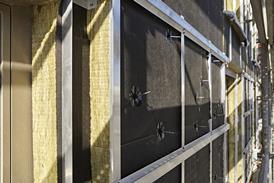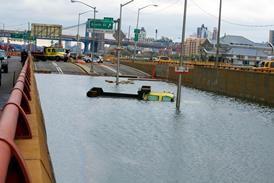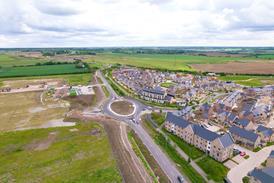The humble smoke alarm may be 40 years old but wireless and multi-sensor technology shows there’s life in the old dog yet
Love it or loathe it, your 40th birthday is one of those big events you just can’t ignore. For the smoke alarm, 40 this year, it’s also a very important event as it marks 40 years of saving lives – many thousands of lives in fact.
In 1969 Americans Randolph Smith and Kenneth House patented the first battery-operated smoke alarm for use in the home. Since that time, the smoke alarm has improved beyond all recognition and is now valued as our most important gadget, if research carried out by TNS Omnibus for the English government’s Fire Kills campaign is anything to go by. According to this research, seven out of 10 adults put the smoke alarm in their top three most important gadgets.
And data supplied from the government’s Fire Statistics, United Kingdom 2006, the most recent to be published, shows why. The number of fire-related deaths in the UK in 2006 was 491 – the lowest since 1959. Dwelling fires are at their lowest since 1978 at 55 800.
The smoke alarm has undoubtedly played a major role in these positive figures. Alarms are being made that are more reliable and the move from battery-powered alarms to mains-powered units in rented dwellings and new-build has certainly helped. Furthermore, initiatives such as BS 5839: Pt 6: 2004 have offered excellent guidance for both the private and public sectors.
But it’s the future we must look to and how to further reduce deaths, non-fatal casualties and damage done to property.
The government, with its Fire Kills public awareness campaign and its revisions to BS 5839: Pt 6: 2004, is doing its part. In fact, the British standard paved the way for new technologies being introduced at the time, which have changed the way we design and install mains-powered alarm systems.
Wireless interconnect technology
Probably the most important technological development involving the domestic smoke alarm since the introduction of mains-powered models is wireless interconnect technology.
Interconnecting smoke alarms are a requirement of BS 5839: Pt 6 and the Building Regulations, but hard-wired interconnection is time-consuming and disruptive and, as a result, costly. However, the ability to interconnect alarms by radio signals has made mains-powered alarms quicker and cheaper to install and made interconnection itself more popular, which has increased safety levels. Interconnected alarms provide an earlier warning.
Wireless interconnection also makes it far simpler for landlords, specifiers and installers to make changes to a system to help meet the changing needs of different tenants. With so much emphasis being placed on individual risk assessment, this flexibility has got to become an integral part of system planning in the future.
The technology has been around for some time, but only in recent years has it been used in domestic smoke alarms and then only by a handful of manufacturers, due to the development costs. Supplier Aico’s RadioLink wireless interconnect system uses existing ionisation, optical and heat alarms. The added ingredient is the RadioLink base that the alarms slide onto.
Each device is independently wired to a permanent mains feed at the nearest ceiling rose. All the devices intended to be on the system are programmed or ‘house-coded’ together at the time of installation.
With more than 16.7 million codes possible, there is no chance of them being triggered by another system. In the event of one alarm detecting a fire, it will immediately send out a signal to all other alarms on the system, sounding the alarm throughout the property.
The ability to interconnect wirelessly has had other knock-on benefits, including the ability to link to other devices such as sprinkler systems, carbon monoxide (CO) alarms (see below) and alarms for the deaf and hard of hearing.
Get integrated
The ability to interconnect alarms using radio signals has made mains-powered alarms quicker and cheaper to install and made interconnection itself more popular
Without doubt, smoke or heat alarm systems are vital to fire safety in the home, but they are passive and can only warn of a fire. This is where an active system, such as a residential sprinkler system, can be used to complement a smoke alarm system, thereby getting the best of both worlds: early control and early warning.
A typical integrated system would consist of a sprinkler system with a flow switch, a wireless interconnect smoke alarm system and a switched input module, such as Aico’s RadioLink Ei408, which allows one-way communication from the sprinkler system
to the smoke alarms. If one of the sprinkler heads is activated, the Ei408 is triggered and a radio-frequency (RF) signal would be sent to the smoke alarms, in the process triggering them.
The multi-sensor
Another piece of new technology that has really made waves is the multi-sensor fire alarm. Previously, this kind of powerful coverage was only available on panel-based systems, but the technology has now been developed for domestic uses. The multi-sensor contains both an optical and a heat sensor in a single unit, so no matter what type of fire breaks out, the two sensors will pick it up.
Over the next few years, expect the multi-sensor to set the ‘best practice’ standard for specifiers wishing to provide the fastest warning and best protection.
You can also expect to see the multi-sensor being used to solve problems in difficult areas, where traditional units may be prone to false alarms.
Remote-control capabilities caught the industry largely by surprise, and many professionals were initially unsure what to make of it. It is now becoming clear that the technology has significant implications.
In a nutshell, remote-control technology means that householders can test and hush their alarms from a conveniently sited, wall-mounted switch. This means that householders do not have to reach up to the ceiling and manually operate the alarm.
The safety benefits, especially for the elderly or infirm, are obvious. What’s more, because the systems are simple and convenient, people are more likely to test their alarms regularly.
Remote-control has had further implications. On larger systems, it was hard (and potentially confusing) to identify precisely which alarm had triggered. Remote-control helps to eliminate this problem by also having a ‘locate’ function that identifies the triggered alarm, making larger systems and greater coverage more viable.
Alarms for the deaf and hard of hearing have been around for a while. However, their importance is being increasingly recognised and, thanks to developments such as wireless technology, it is easy and relatively inexpensive to extend coverage out of the bedroom and into, say, the living room by incorporating visual warning indicators.
It is hard to quantify just how many lives smoke alarms have saved over the past 40 years, but one thing is certain: the smoke alarm is a vital, life-saving device.
With continued investment in research and development into alarms and the introduction of technology that allows for greater, cost-effective coverage in a property and improved systems, the smoke alarm will continue to save lives for many years to come.
This article was originally published in EMC March 09 as There's life after 40
Source
Electrical and Mechanical Contractor
Postscript
Neil Perdell is national technical manager at Aico





















No comments yet